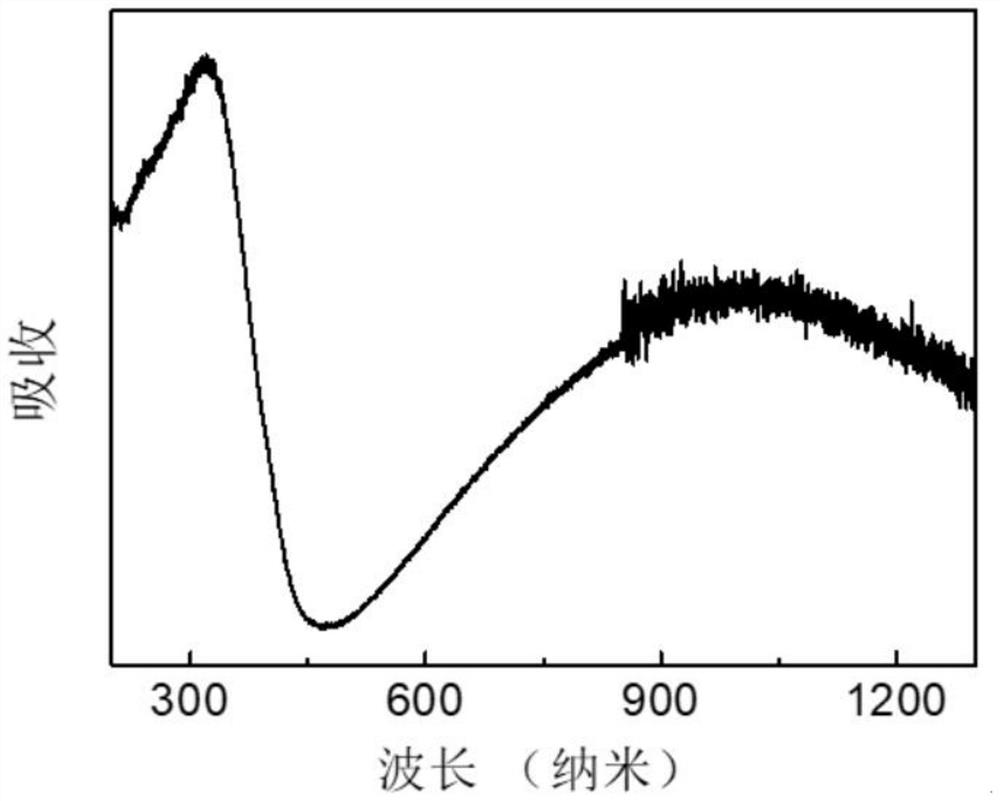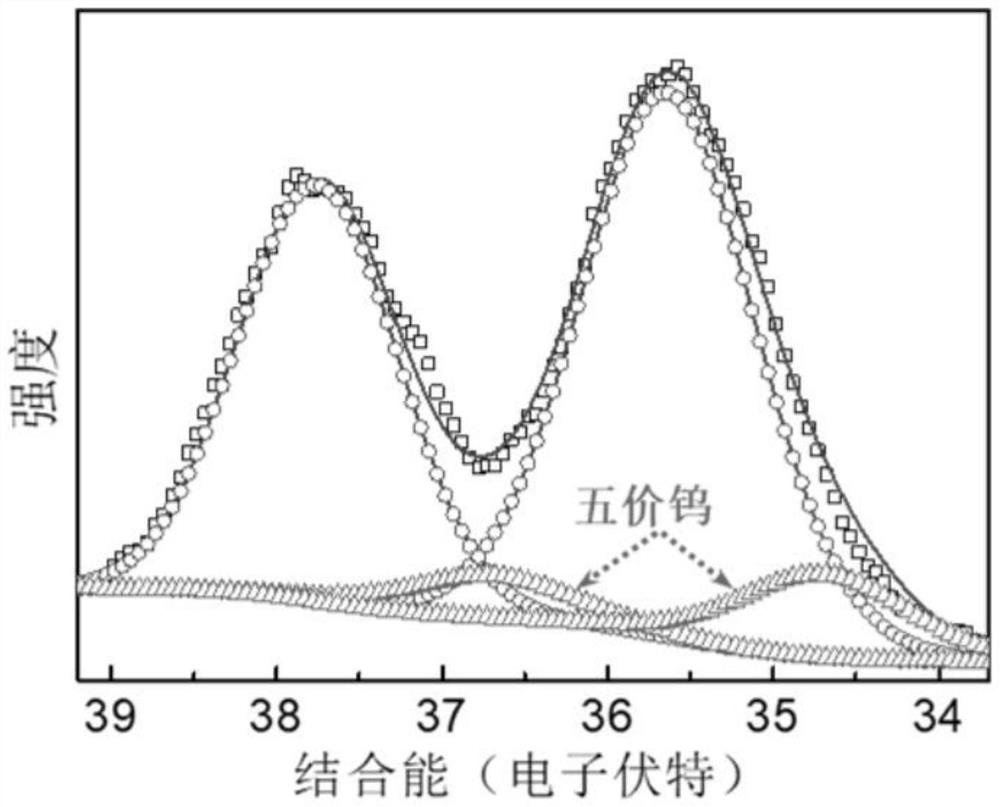Semiconductor nanomaterial for regulating and controlling up-conversion luminescence through surface plasma resonance as well as preparation method and application of semiconductor nanomaterial
A surface plasmon and nanomaterial technology, applied in the field of up-conversion luminescent materials, can solve the problems of poor up-conversion fluorescence effect and weak resonance effect, and achieve the effect of selectively enhancing fluorescence and increasing the concentration of free electrons
- Summary
- Abstract
- Description
- Claims
- Application Information
AI Technical Summary
Problems solved by technology
Method used
Image
Examples
Embodiment 1
[0035] Example 1 Preparation of surface plasmon bismuth tungstate nanomaterials
[0036] (1) 2 mL of nitric acid solution with a mass fraction of 65% was dropped dropwise into 15 mL of a bismuth nitrate pentahydrate ethanol solution with a concentration of 33 mmol / L, and stirred for 15 min at a rotational speed of 30 rpm to obtain solution A.
[0037] (2) 15 mL of sodium tungstate aqueous solution with a concentration of 33 mmol / L was added dropwise to the solution A obtained in step (1), and stirred for 30 min at a rotating speed of 30 rpm to obtain a mixed solution B.
[0038] (3) The mixed solution B was transferred to a hydrothermal kettle with a capacity of 50 mL, reacted at 180° C. for 6 h and then cooled to room temperature naturally to obtain a reaction product C.
[0039] (4) Wash the reaction product C with deionized water and anhydrous ethanol solution successively, and centrifuge at 8000 rpm after washing, and after centrifugation, the precipitate is placed under v...
Embodiment 2
[0041] Example 2 Preparation of surface plasmonic bismuth tungstate / upconversion nanoparticles and regulation of upconversion luminescence
[0042] The surface plasmon bismuth tungstate nanomaterial prepared in Example 1 is used to regulate the up-conversion luminescence of rare earth, as follows:
[0043] Commercial up-conversion nanoparticles (NaYF) with an excitation wavelength of 980 nm used in this example 4:Yb,Er), the nanoparticle has a core-shell structure with a diameter of 35-45nm, a shell layer of silicon dioxide, and a thickness of 5nm, purchased from Hefei Henner Biotechnology Co., Ltd. 30 μL of 3-aminopropyltriethoxysilane was added to the above-mentioned 10 mg of up-conversion nanoparticles and stirred for 12 hours to obtain up-conversion nanoparticles with surface-modified amino groups. Then, 1 mg of the surface plasmon bismuth tungstate of Example 1 and 1 mg of amino-modified upconversion nanoparticles were placed in an ethanol solution, mixed, and sonicated ...
PUM
 Login to View More
Login to View More Abstract
Description
Claims
Application Information
 Login to View More
Login to View More - R&D
- Intellectual Property
- Life Sciences
- Materials
- Tech Scout
- Unparalleled Data Quality
- Higher Quality Content
- 60% Fewer Hallucinations
Browse by: Latest US Patents, China's latest patents, Technical Efficacy Thesaurus, Application Domain, Technology Topic, Popular Technical Reports.
© 2025 PatSnap. All rights reserved.Legal|Privacy policy|Modern Slavery Act Transparency Statement|Sitemap|About US| Contact US: help@patsnap.com



